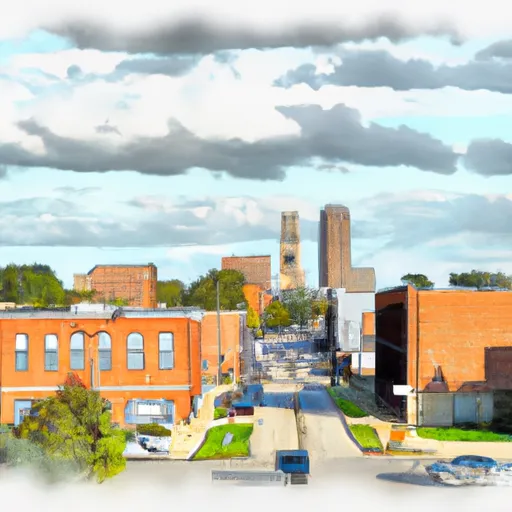-
 Snoflo Premium
Snoflo Premium
Get unlimited access to all our content
With no Ad interruptions! - Start Your Free Trial Login with existing account
Tuscola
Eden Index
Climate
8.1
•
Recreation
2.5
•
Community
3.0
•
Safeguard
4.8/10

Tuscola, Illinois is a charming small town located in Douglas County in the central part of the state. The climate in Tuscola is classified as humid continental, characterized by hot summers and cold winters. Average temperatures range from the mid-80s°F (around 30°C) in summer to the mid-20s°F (-4 to -7°C) in winter. The area receives moderate precipitation throughout the year, with May being the wettest month.
Hydrologically, Tuscola is not directly situated on a major river or lake. However, it is surrounded by several small rivers and creeks, including the Embarras River and the Mackinaw River, offering opportunities for boating, fishing, and kayaking. The lakes in the nearby Douglas County Conservation Area are also popular among anglers.
Outdoor recreation enthusiasts will find plenty of opportunities in and around Tuscola. The city has several parks and recreational facilities, including Ervin Park, which features playgrounds, sports fields, and picnic areas. Additionally, the nearby Kickapoo State Recreation Area offers a wide range of outdoor activities such as hiking, camping, fishing, and horseback riding. The area's natural beauty and varied terrain provide an ideal backdrop for exploration and outdoor adventures.
What is the Eden Index?
The Snoflo Eden Index serves as a comprehensive rating system for regions, evaluating their desirability through a holistic assessment of climate health, outdoor recreation opportunities, and natural disaster risk, acknowledging the profound impact of these factors on livability and well-being.
Climate Health Indicator (CHI): 8.1
Tuscola receives approximately
1018mm of rain per year,
with humidity levels near 84%
and air temperatures averaging around
12°C.
Tuscola has a plant hardyness factor of
5, meaning
plants and agriculture in this region thrive during a short period during spring and early summer. Most
plants will die off during the colder winter months.
By considering the ideal temperature range, reliable water supplies, clean air, and stable seasonal rain or snowpacks, the Climate Health Indicator (CHI) underscores the significance of a healthy climate as the foundation for quality living.
A healthy climate is paramount for ensuring a high quality of life and livability in a region, fostering both physical well-being and environmental harmony. This can be characterized by ideal temperatures, reliable access to water supplies, clean air, and consistent seasonal rain or snowpacks.
Weather Forecast
Streamflow Conditions
Wabash
Area Rivers
Wabash
Snowpack Depths
Wabash
Reservoir Storage Capacity
Wabash
Groundwater Levels
Recreational Opportunity Index (ROI): 2.5
The Recreational Opportunity Index (ROI) recognizes the value of outdoor recreational options, such as parks, hiking trails, camping sites, and fishing spots, while acknowledging that climate plays a pivotal role in ensuring the comfort and consistency of these experiences.
Access to outdoor recreational opportunities, encompassing activities such as parks, hiking, camping, and fishing, is crucial for overall well-being, and the climate plays a pivotal role in enabling and enhancing these experiences, ensuring that individuals can engage in nature-based activities comfortably and consistently.
Camping Areas
| Campground | Campsites | Reservations | Toilets | Showers | Elevation |
|---|---|---|---|---|---|
| Jurgens City Park | None | 658 ft | |||
| Paris Landing State Park | 63 | 392 ft | |||
| Sam Parr State Park | 80 | 524 ft | |||
| Sumter Rec Area | None | 128 ft | |||
| South City (Gibson) Park | None | 741 ft | |||
| Cochrane | None | 166 ft | |||
| Gibson City Park | 4 | 731 ft | |||
| Fox Ridge State Park | 45 | 728 ft | |||
| Prairie Pines Campground | None | 730 ft | |||
| Natchez Trace State Park | 50 | 637 ft |
Nearby Ski Areas
Catastrophe Safeguard Index (CSI):
The Catastrophe Safeguard Index (CSI) recognizes that natural disaster risk, encompassing floods, fires, hurricanes, and tornadoes, can drastically affect safety and the overall appeal of an area.
The level of natural disaster risk in a region significantly affects safety and the overall livability, with climate change amplifying these risks by potentially increasing the frequency and intensity of events like floods, fires, hurricanes, and tornadoes, thereby posing substantial challenges to community resilience and well-being.
Community Resilience Indicator (CRI): 3.0
The Community Resilience Indicator (CRI) recognizes that education, healthcare, and socioeconomics are crucial to the well-being of a region. The CRI acknowledges the profound impact of these elements on residents' overall quality of life. By evaluating educational resources, healthcare accessibility, and economic inclusivity, the index captures the essential aspects that contribute to a thriving community, fostering resident satisfaction, equity, and social cohesion.

